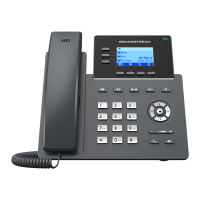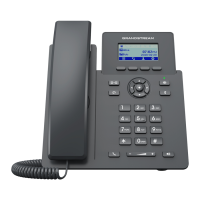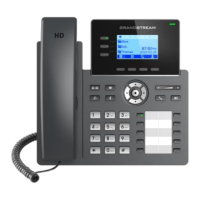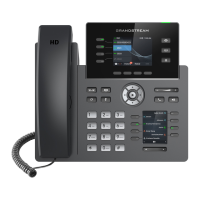Table 16: External Service Page Definitions
NAT SETTINGS
If the devices are kept within a private network behind a firewall, we recommend using STUN Server. The following settings
are useful in the STUN Server scenario:
STUN Server
Under Settings→General Settings, enter a STUN Server IP (or FQDN) that you may have, or look up a free public STUN Server
on the internet and enter it in this field. If using Public IP, keep this field blank.
Use Random Ports
It is under Settings→General Settings. This setting depends on your network settings. When set to “Yes”, it will force random
generation of both the local SIP and RTP ports. This is usually necessary when multiple GRPs are behind the same NAT. If using
a Public IP address, set this parameter to “No”.
NAT Traversal
It is under Accounts X→Network Settings. The default setting is “No”. Enable the device to use NAT traversal when it is
behind a firewall on a private network. Select Keep-Alive, Auto, STUN (with STUN server path configured too), or other options
according to the network setting.
PACKET CAPTURE
GRP260X is embedded with a packet capture function. The related options are under Maintenance→System
Diagnosis→Packet Capture.
Location Server Username Configure the user name of the primary Location Information Server (LIS)
Location Server Password Configure the password of the primary Location Information Server (LIS)
Secondary Location Server Configure the seconary Location Information Server (LIS) address
Secondary Location Server Username Configure the user name of the secondary Location Information Server (LIS)
Secondary Location Server Password Configure the password of the secondary Location Information Server (LIS)
HELD Location Types
Configure "locationType" element in the location request. "geodetic", "civic" and "location
URI"
HELD Use LLDP Information
If "Yes", the information from LLDP-suport switch is used to generate ChassisID and PortID;
otherwaise, the mac address of gateway and phone is used as default.
HELD NAI
If "Yes", Network Access Identifier (NAI) is included as a device identity in the location
request sent to the Location Information Server (LIS)
E911 Emergency Numbers A user can configure multiple emergency numbers separated with the delimiter symbol ";".
Geolocation-Routing Header
If "Yes", E.911 INVITE message includes the "Geolocation-Routing" header with the value
"Yes"
Priority Header If "Yes", E.911 INVITE message includes the "Priority" header with the value "emergency"
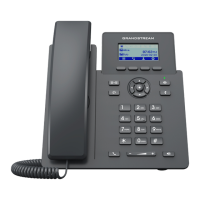
